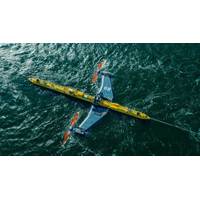
Orbital to Supply Floating Tidal Energy Turbine for Washington State Project
, has been confirmed as the technology partner for Orcas Power & Light Cooperative (OPALCO)’s proposed site off Blakely Island in Rosario Strait, Washington State.Building on a memorandum of understanding (MoU) signed between Orbital and OPALCO in 2021, the latest update follows the U.S. Department of Energy (DOE) shortlisting two marine energy projects to receive $6 million for the development of a tidal energy research, development, and demonstration pilot site.At the end of the Phase 1 term, one of the two organizations will be funded to move forward with development of a full project
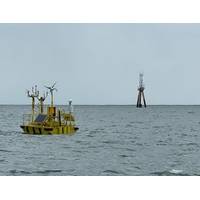
Weather Data Gathering Project Underway for US Offshore Wind
The U.S. Department of Energy (DOE) and the National Oceanic and Atmospheric Administration (NOAA) have launched an 18-month initiative to gather extensive weather, ocean, and wildlife data near the sites of active offshore wind farms and lease areas off the coast of the Northeast United States.This effort, which is part of the third phase of the Wind Forecast Improvement Project (WFIP3), seeks to gather high-quality data to improve the design and operation of offshore wind turbines and wind farms. Accurate forecasts are essential for maximizing wind plant output.“The major goal of WFIP3 is to
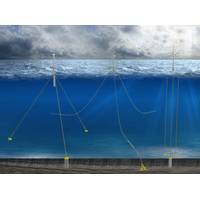
US and Denmark Team Up for $4.2M Floating Wind Innovation Call
The U.S. Department of Energy’s (DOE) Wind Energy Technologies Office (WETO) and Innovation Fund Denmark have announced an intention to release a $4.2 million funding opportunity to advance floating offshore wind energy systems.The announcement builds on a memorandum of understanding (MoU) between DOE, the Denmark Ministry of Higher Education and Science, the Denmark Ministry of Climate, Energy and Utilities, and Innovation Fund Denmark signed in 2021.The proposed funding opportunity will focus on research to improve mooring technologies and methods, which are used to secure floating platforms

US Invests Nearly $16 Million to Advance Marine Energy
The U.S. Department of Energy (DOE) has announced two marine energy projects will receive a combined $6 million to develop a tidal energy research, development, and demonstration pilot site in the United States.In addition, a community-led river current energy research and development project was selected to receive $9.5 million.Tides and currents are incredibly predictable, meaning these resources could help balance other sources of renewable energy and be important contributors to a 100% clean energy grid. This funding, supported by the Bipartisan Infrastructure Law, encourages U.S. leadership in
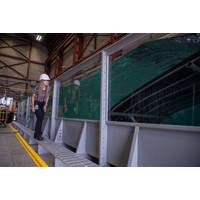
US DOE Launches $14.5M Marine Energy Research Call
The U.S. Department of Energy's (DOE) Water Power Technologies Office (WPTO) and Wind Energy Technologies Office (WETO) have released a $14.5 million funding opportunity to support foundational research at higher education institutions related to marine renewable energies.The call is aimed at domestic institutions of higher education, including minority-serving institutions, as part of an effort to address challenges facing marine and ocean renewable energy industries and spur innovation and development.The opportunity will provide funding for foundational research and development (R&D)
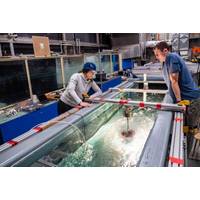
US DOE’s TEAMER Awards $1.3M to Marine Energy Researchers
The U.S. Testing Expertise and Access to Marine Energy Research (TEAMER) Program, supported by the U.S. Department of Energy (DOE), has selected 10 projects to share $1.3 million for marine energy-related research.The projects have been selected as part of TEAMER Program’s 11th Request for Technical Support (RFTS).The marine energy projects will receive support for testing expertise and access to numerical modeling, laboratory or bench testing, tank/flume testing, and expertise within the growing TEAMER Facility Network.Selected applicants, along with their supporting facility, will now submit
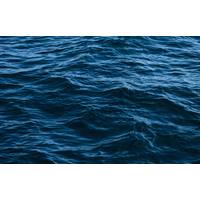
DOE Launches $1.7 Million Marine Energy Prize
The U.S. Department of Energy (DOE) has launched the Powering the Blue Economy™: Power at Sea Prize, which will award up to $1.7 million to competitors to advance technologies that use marine energy to power ocean-based activities.Next-generation maritime or “blue” technologies are moving farther offshore to capture data across the ocean. Applications may include ocean-observing devices, aquaculture installations, and much more, and all require access to consistent, locally available power. The prize challenges competitors to meet this need by identifying new, innovative, and feasible

UH Researchers Developing Electrochemical Oceanic Carbon Capture Technology
assistant professor of environmental engineering at UH’s Cullen College of Engineering, are developing a negative emissions technology called electrochemical direct ocean capture (eDOC), which helps the ocean cleanse itself of harmful carbon dioxide.Funded by a $250,000 grant from the US Department of Energy, Rahimi and his team are working to create electrochemical tubes to remove dissolved inorganic carbon from synthetic seawater. Preliminary research on the project was sponsored by UH Energy’s Center for Carbon Management in Energy. The concept is detailed in a paper published in the
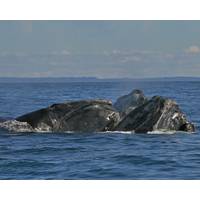
Threat to Whales Complicates US Research into Seaweed for Biofuel
from 480 right whales in 2010.The biggest threats they face include being struck by passing ships or getting entangled in ropes used for lobster fishing off the U.S. East Coast - scientists have recorded 98 such injuries or deaths of whales since 2017.Now, the whales face another threat as the U.S. Department of Energy tries to boost clean energy production by ramping up research into seaweed, or kelp, as a potential source of biofuel, scientists say.The DOE has funneled tens of millions of dollars into such research. If proven viable, seaweed offers a more eco-friendly alternative to corn-based ethanol



 February 2024
February 2024





